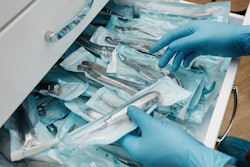
When Peter Benchley released the book “Jaws” in 1974, he made sharks Public Enemy #1. Millions of people stayed out of the oceans—or at the water’s edge. But, as it turns out, this much-feared fish had gotten a bad rap. They weren’t out hunting people for lunch after all. And now, it seems sharks—or at least a part of their anatomy—can be a valuable asset to the medical world. Why?
As the Biomimicry Institute has stated in the past, shark skin has some amazing qualities. While many other water species—and even ships—accumulate biofouling as they move through the water, sharks don’t. In fact, even bacteria can’t adhere to their skin. This resistance comes not so much from the chemical makeup of their skin as its pattern.
While shark skin may appear relatively smooth to the naked eye, it is actually made up of thousands of backward diamond-shaped pointing grooves and ridges. These dermal denticles keep bacteria from attaching and growing on the shark’s skin.
Sharks in the medical toolkit
It’s this ability of shark skin resisting bacterial growth that inspired Dr. Anthony Brennan, the founder of Sharklet Technologies and honorary chair of the company’s scientific advisory board, to create Sharklet, the first surface technology to inhibit the growth of bacteria through pattern alone.
Influenced by the shape and pattern of the dermal denticles of shark skin, the Sharklet surface is comprised of millions of microscopic features arranged in a distinct diamond pattern. The structure of the pattern inhibits bacteria from attaching to it, colonizing, and forming biofilms.
The effectiveness of Sharklet was proven in a study on preventing/reducing catheter-associated urinary tract infections. In the study, three variations of Sharklet micropatterned silicone rods and a smooth silicone rod were placed between two agar islands to measure E. coli migration. The results?






















